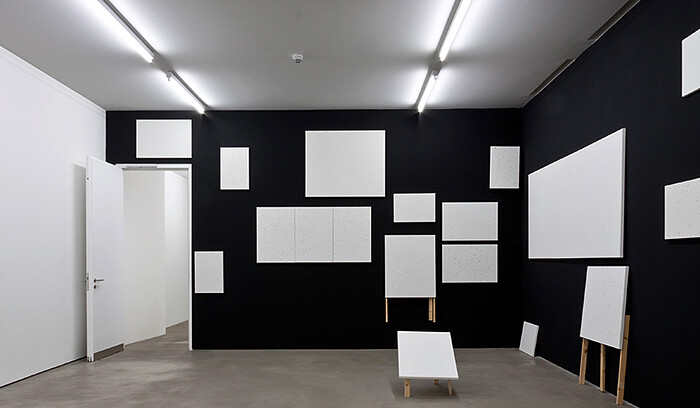The end of the 20th century witnessed an explosion of interest in narrative practices. Often referred to as “the narrative turn,” this new field of inquiry originated in French structuralism’s general approach to language, and more explicitly from Tzvetan Todorov’s passion for what he termed “a science of narrative,” la narratologie. Postmodernism itself was a “narrative turn,” in which a rekindled interest in the fictive, the chronicle, and the anecdotal upstaged the symbolic unity of high modernism.
Narrative practices should not, however, be confused with language practices, the constituency conceptual art laid claim to, which for the most part limits the usage of language to a designative function. Or rather: it’s not language that matters, but what you do with it that counts.
Postmodernism also entailed a major shift from the political to the personal, and narrative practices are thus intertwined with a preoccupation with biographical inquiry and individual identity. In “The Art of Narration Changes with Time,” curated by Gigiotto Del Vecchio, all the works have a rickety resolution in common, signaling their self-made quality and the haphazard nature of the I.
The exhibition opens up with Klaus Weber’s Bee Paintings (2011), bright-white canvasses splattered with bee waste, positioned at random all over the room. The fantasy of the super-ego work ethos of the beehive, for whom inspiration is mere industry, undermines the much sought after “revolutionary power of abstraction” (as Clement Greenberg might have put it). As part of the project, Weber planned to have a 200,000 bee-strong demonstration at the Adam Smith monument in Edinburgh, which depicts the father of classical economics with his hand upon a beehive, but the Edinburgh City Council refused to grant a permit due to a fear of bee stings.
In a foyer between rooms, one finds the equally precarious Make Your Movie (2010) by Alex Hubbard, a film in which the artist piles kitchen utensils and appliances in a ramshackle assembly atop a kitchen stove, while a TV (also placed on the stove) alternates between home movies and real-time images of the artist’s handiwork. The self-referential and somewhat hazardous character of Hubbard’s maneuvers echoes other works on display, such as Rosalind Nashashibi’s bleak photographs, Sunspot 8, 4 and 9 (2010) and forsaken fairytale props, The World Cracked Open (2010), along with Thea Djordjiadze’s derelict sculptures, Untitled, Not yet Titled, Untitled (all 2011), and Oscar Tuazon’s self-proclaimed “outlaw architecture,” Where I Lived and What I Lived for (2007), a rough erection reminiscent of mine shaft beams and survivalist makeshift constructions. Less “Mad-Max” and more “Mad About You” is Moyra Davey’s Fifty Minutes (2006), an intimate musing about the artist’s bookshelves, fridge, basement, therapist, domestic life, and, overall, the peculiar processes of thought formation. On a lyrical note, Margret Salmon’s Rooms (East New Orleans) (2008) depicts scenes of family life after hurricane Katrina—which, though mute, possesses a hypnotic visual rhythm. Invoking magic realism’s blending of fantastic elements into every-day life, one finds João Maria Gusmão and Pedro Paiva’s 16mm films, in which a flying parallelepiped floats over a landed Persian carpet, Persian Rug (2010); or a matryoshka-like sequence of cups within pots that ends up with just three scant peas, Pot Smaller Than Pot (2010); and last but not least, Peter Coffin’s nostalgia-inducing Silly Putty image transfers, Untitled Imprints (2005), and a fourth-dimensional golden donut-bagel with sesame seeds (technically speaking two tori intertwined in a Hopf link). Sounds like a hodgepodge? Well, when it comes to the stories that people tell about themselves, customs constitute coherence. In other words, narration is a reflexive interplay: personal stories have the guise of coherence because they partake in the artful practices of storytelling; they have a semblance of individuality because they incorporate personal diversity. Amidst the debris of every-day life, narrative typically emerges in order to resolve some fundamental antagonism by rearranging the conflicting terms into a temporal succession—which allows one to be a minimalist prone to mysticism; a technophile ecologist; or a deeply-psychoanalyzed reader of the daily horoscope. Or, to negatively paraphrase Bruce Nauman and David Wellbery, the true artist does not help the world by revealing mystic truths because art is not a sublimated projection unaware of the rifted world from which it springs.





